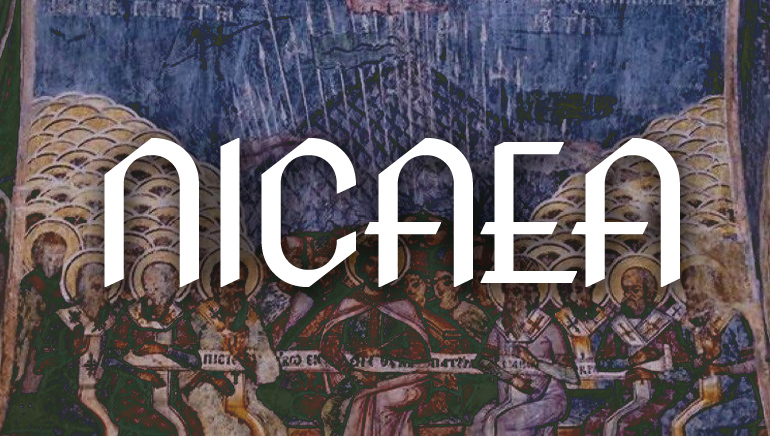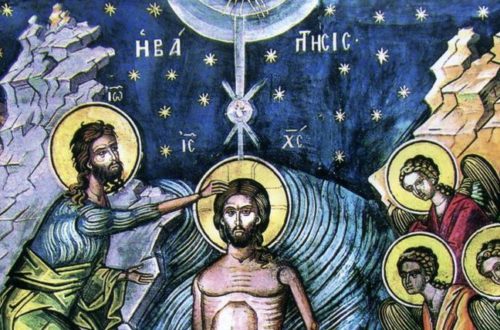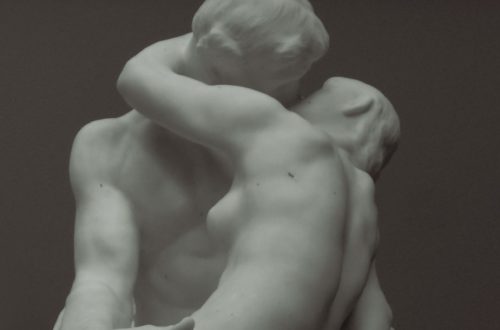
Learning from the Fathers: Nicaea at 1700
This year (2025) marks the 1,700th anniversary of the Council of Nicaea—the first ecumenical council of Christendom that declared that God the Father and Jesus are homoousios (of one essence or nature). There have already been many recaps and discussions of the Creed and its aftermath, and it has been my privilege to make a couple of more general contributions. But I thought it might be helpful to offer some less-commonly noticed features of the fourth century disputes that might still help us today.
1. It Began with Classical Theology Gone Bad.
The Arians were strong believers of the absolute transcendence and simplicity of God.
The Arians were strong believers of the absolute transcendence and simplicity of God. They wanted to insist that there is nothing changeable about God; nothing physical or composite. They wanted to reject anthropomorphic theology that brought God down to our level. These concerns caused them to fiercely oppose any hint that God might undergo change or have parts—which is what they thought Nicaea implied. Arius and his allies make it clear in their letter to Bishop Alexander of Alexandria:
[Jesus] is neither eternal nor co-eternal nor co-unbegotten with the Father, nor does he have his being together with the Father, as some speak of relations, introducing two unbegotten beginnings. But God is before all things as monad and beginning of all. … But if the expressions … are understood by some to mean that he is part of [the Father], one in essence and as an emanation, then the Father is, according to them, compounded and divisible and alterable and material, and, as far as their belief goes, the incorporeal God endures a body.
The Arian faction’s desire to maintain simplicity of God was a worthy one, but their way of defending it—and their overconfidence in their own understanding—led them away from Scripture. It made them try to separate Jesus from his Father when the New Testament unites them in praise and glory (e.g. Phil 2:9-11; Heb 1:3). It caused them to pull Jesus down, whereas the Bible always lifts him up. (e.g. John 5:23; Rev 5:13-14).
2. It Was All About The Meaning of “Son”.
The Arians thought that Jesus was a special creature brought forth to create the cosmos. They would call him God’s “Son” but only in the same sense that the Bible means it when it refers to humans or angels (e.g. Ex 4:22; Job 2)—i.e. a creature with a special place in God’s economy.
They were partly right. Jesus in his human life is also “Son” in this official sense (e.g. John 1:49; Mark 14:61). But the pro-Nicene bishops recognised that passages like John 1:14,18 and Romans 8:32 required something more like a literal reading of the word. As Bishop Alexander writes in a letter to the Bishop of Constantinople:
And it is on this account that our Lord, being by nature the Son of the Father, is worshipped by all … Paul declared his true, unique, natural, and special sonship when he said by inspiration that “he spared not his own Son, but delivered him up for us” [Rom 8:32], who are not by nature his sons.
(Alexander, Letter to Alexander of Constantinople)
Athanasius, Alexander’s successor agreed. Indeed he argued that real sonship was what the homoousios language of Nicaea was all about:
[Sharing a common nature] is a property of children with reference to their parents. And like manner also, when the Fathers said that the Son of God was from His essence, reasonably have they spoken of Him as coessential.
(Athanasius, On the Synods)
3. Everyone Had Their Pet Bible Verses.
Unfortunately, it wasn’t obvious to everyone that this was what homousios meant. Marcellus of Ancyra (an ally of Athanasius) interpreted it to mean something like Jesus was part of God. Taking his cue from John 1:1, he described Jesus as God’s internal Word/Reason who only came forth when it was time to create. The word “Son” didn’t apply to Jesus until he became a man.
Both the Marcellans and homoiousians could point to Bible, but only bits of it.
Other bishops, in part spooked by this, revolted. They pointed to Bible passages that emphasised Chris’s likeness to the Father (e.g. Col 1:15; Heb 1:3) and called for a different word that would reflect this distinction. Instead of homoousios they said he should be called homoiousios—of similar essence.
Both the Marcellans and these homoiousians could point to Bible, but only bits of it. The Marcellans, as they seized on the biblical idea that Jesus was inseparably one with God (his Word), devalued the (more common) “Son” texts. The homoiousians, in their determination to defend the genuine individuality of the Son, failed to think hard enough about the passages that showed Jesus as inseparably one with the Father.
What was needed was an approach that could take all the verses seriously. Someone needed to do a better job of showing how Jesus sonship fitted with his being described as God’s “Word” and “Wisdom” and “Radiance” etc. Someone needed to articulate the differences between human sonship and that of God. Here’s Athanasius giving it a good crack:
… the generation of the Son from the Father is not according to the nature of men, and not only like, but also inseparable from the essence of the Father, and He and the Father are one, as He has said Himself, and the Word is ever in the Father and the Father in the Word, as the radiance stands towards the light (for this the phrase itself indicates), therefore the Council, as understanding this, suitably wrote “one in essence.”
(Athanasius, On the Creed)
4. Actually Listening to People Helped
One decisive factor that turned the tide in the Trinity debates was when people like Athanasius and Hilary (an exiled pro-Nicene Bishop from Poitiers) actually began listening to their opponents. As they did, they realised that many of the homoiousians were orthodox: they didn’t think Jesus was a creature; they did think he was God’s real Son; they were mostly just worried about people (like Marcellus) using homoousios to depersonalise Christ.
That was good enough for Athanasius. He still wanted to convince people of the usefulness of the term, but he could tell when there was conceptual agreement behind the words:
[People who] accept everything else that was defined at Nicaea, and doubt only about the word Coessential, must not be treated as enemies; nor do we here attack them as Ario-maniacs, nor as opponents of the Fathers, but we discuss the matter with them as brothers with brothers, who mean what we mean, and dispute only about the word. For, confessing that the Son is from the essence of the Father, and not from other subsistence, and that He is not a creature nor work, but His genuine and natural offspring, and that He is eternally with the Father as being His Word and Wisdom, they are not far from accepting even the phrase, ‘Coessential.’
(Athanasius, On the Synods)
Hilary writes similarly. In a parallel treatise on the synods he defends the homoiousians and argues that their ideas should be seen as complementary: homoiousios implies homoousios, unless the latter is really modalism. As with Athanasius in the previous point, he shows the need to speak from both sides of the dialectic:
Let us bring forward no isolated point of the divine mysteries to rouse the suspicions of our hearers and give an occasion to the blasphemers. We must first preach the birth and subordination* of the Son and the likeness of His nature, and then we may preach in godly fashion that the Father and the Son are of one substance.
(Hilary, On the Councils)
5. It Required New Terminology.
It’s an open question whether Arianism might have been defeated without the inclusion of homoousios. Later histories describe it as a word that the Arians couldn’t spin or reinterpret. Yet as we have seen, the word itself needed explanation and Hilary and Athanasius thought they could recognise orthodox theology without it.
What we can say with certainty is that it was initially required to do too much work on its own. As long as there was only one word (ousia/essence) to describe what the Father and Son were, it was going to be impossible to speak about their oneness (homoousios) without a hint of modalism, or to insist on their equality (homoiousios) without it sounding like polytheism.
Nowadays we describe God as one “being” and three “persons”, which correspond to ousia and hypostasis. But in the 325AD Creed, the two words are treated as synonyms, so there was no help there. Only when the Cappadocian Fathers introduced their distinction between ousia and hypostasis was the confusion alleviated:
That which is spoken of in a special and peculiar manner is indicated by the name of the hypostasis. Suppose we say “man” … The nature is indicated, but what subsists and is specially and peculiarly indicated by the name is not made plain. Suppose we say “Paul.” We set forth, by what is indicated by the name, the nature subsisting.
(Basil of Caesarea (or Gregory of Nyssa), Letter 38)
Of course this explanation still needed to be qualified in exactly the same way that “Son” did to avoid the idea of two Gods.
6. It Took Time.
It took fifty-six years for the theology of Nicaea to finally achieve genuine acceptance at the Council of Constantinople: fifty-six years of dirty tricks, suffering, political manoeuvring, insincere professions and patient argumentation. It took time for the homoiousians to realise that some of their number were outright Arians; time for people like Athanasius and Hilary to learn how to listen and talk to them. It took time for a western emperor (Theodosius) to finally come to power and establish Nicene Christianity.
And thank God for that.
Nicaea for Today
Today, as the Trinity debates return; as appetites increase for advanced systematic theology, there are important reminders and warnings to take from the fourth century. Here are a few to end with:
- Arius and his friends provide a cautionary warning against being too sure about our logical deductions—especially when they require us to explain our way around the plain reading of Scripture.
- The centrality of “sonship” reminds us that we can’t get past analogies when it comes to the Trinity but that not all analogies are created equal: some come from God himself. We need to let God teach us through the analogy of our own existence but also modify our understanding by the patterns of the Bible.
- We need to be willing to hold different ideas in tension, even if we don’t quite understand how that can work logically.
- We need to get the tension right. Marcellus shows what can happen if we allow a minor scriptural motif to dominate a more pronounced analogy.
- The importance of technical words—and the variations in their meaning—should make us check whether we are understanding them rightly. Does our modern concept of “person” align with what our pro-Nicene forefathers had in mind? Does “being” as we think of it really mean the same as ousia?
- Finally, the examples of Athanasius and Hilary encourage us to be patient with one another when we disagree. Do we work hard to understand why our antagonists think as they do? Do we pray for them and ourselves to have a more faithful understanding? Half-cocked accusations of modalism or Arianism (or semi-Arianism*) do not generally help. Acknowledging the legitimacy of different concerns, emphases and starting points may.
* If you react to Hilary’s use of “subordination”, you might like to read the whole treatise.



